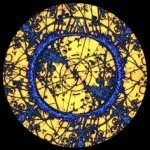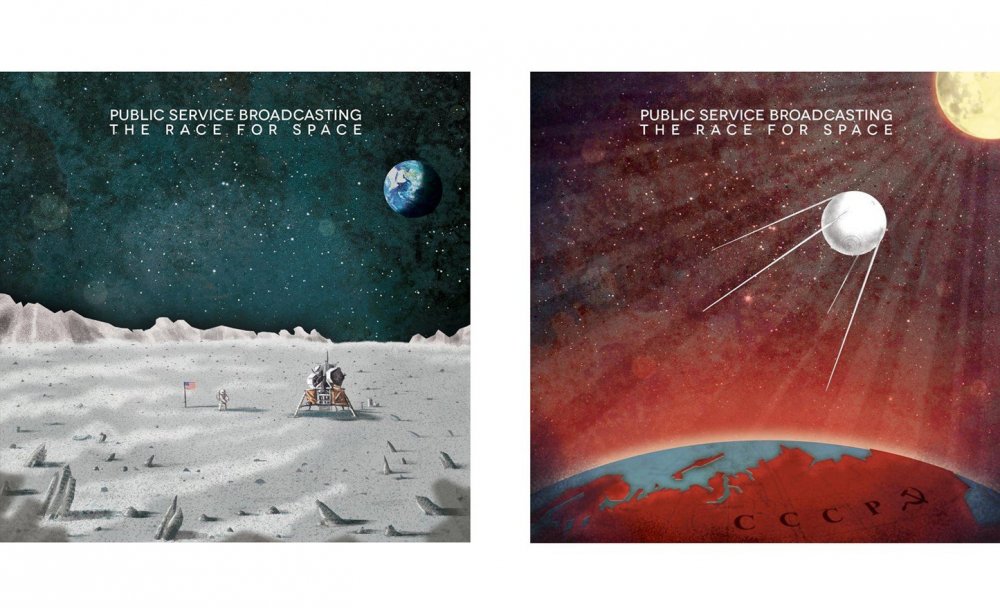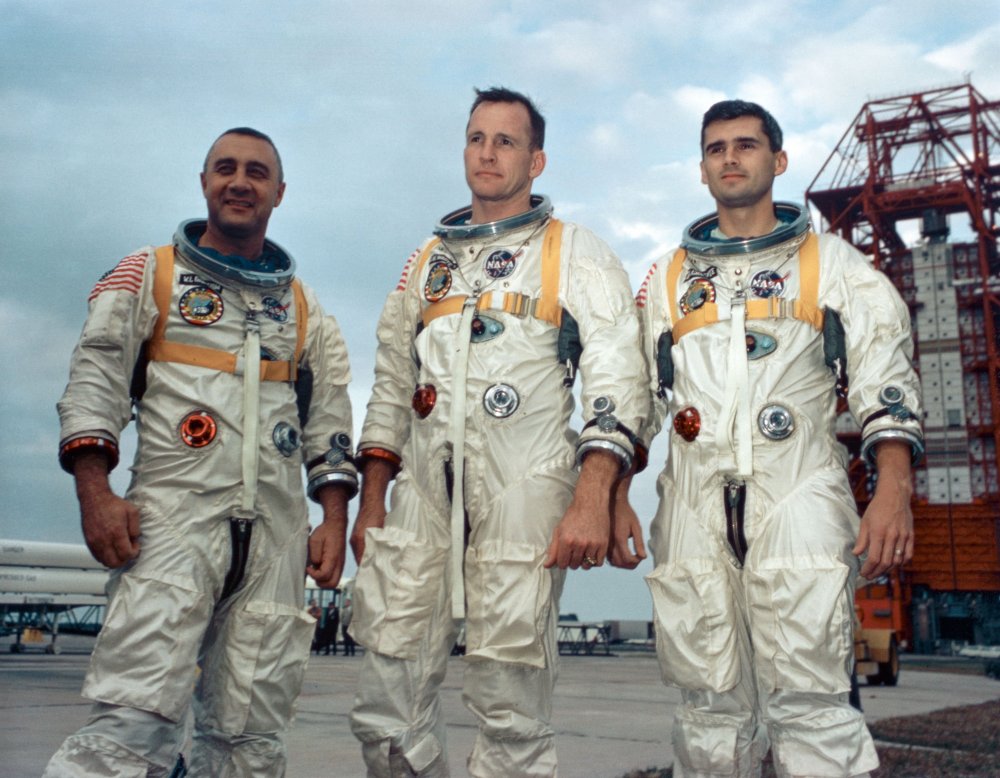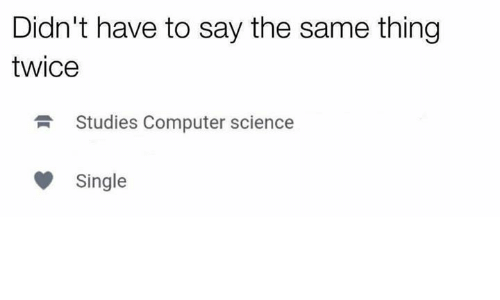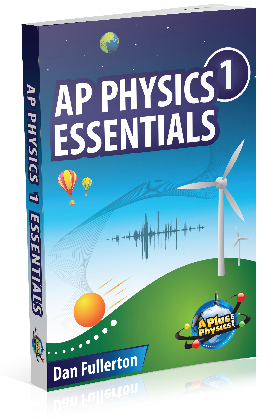Blogs
Our community blogs
-

- 30
entries - 12
comments - 3342
views
Recent Entries
Latest Entry
WoP #29: Why a Church Doesn't Make a Good Auditorium
This Thursday, the Irondequoit High School Philharmonic Orchestra and Choirs will be performing their major works concert at the St. Mary's Church, right next to the Geva theater. It's quite the interesting concert to perform, in that we're all playing in an unfamiliar venue, and have had only a single day where we ALL got together to practice. Oh, and it doesn't help that the acoustics in the church are terrible, arguably only a little better than the IHS gymnasium.
Why are they terrible, you ask? Let me tell you. In a real theater or concert hall, the entire venue is designed with the acoustics in mind. For simplicity's sake, imagine sound waves as transverse instead of longitudinal. As Physics 1 taught us, if there's more than one source of sound, the sound will be amplified where peak meets peak and trough meets trough, and nullified where trough meets peak. Because the architects who designed the building know, in general, where the performers will be, they'll have a good idea of where the sound will be loudest (likes meet), and quietest (opposites meet), and will thus place the aisles at quiet points and the seats in louder areas, to maximize the enjoy-ability of the performance. Churches, however, (like St. Mary's) are not designed with acoustics in mind. Churches are designed for masses in which they generally have only a single person speaking, meaning that even if sound reflects off the walls, there's generally going to be a pretty similar listening experience everywhere. As such, the seats are organized in straight rows which are evenly spaced, meaning that when the orchestra starts playing, there's going to be some odd spots in which the sound dwindles more. Add to that the cramped feel of squeezing an ~20 person orchestra and ~50 person choir onto and in front of an altar, and it makes for a really interesting performance.
- Read more...
-
- 0 comments
- 30
-
 Latest Entry
Latest Entry
Week 1: Physics C
Last Tuesday marked the first day of Physics C. After a long summer vacation and countless times emailing my counselor to either add or drop Physics C, I finally made up my mind to officially take Physics C. But before I get ahead of myself I want to let you know about my interests. I've been cheerleading all my life and I played softball for 8 years. I love watching Space Documentaries and even though science was never my strongest subject I thought it was always interesting so I decided to challenge myself. I'm aspiring to become an architect and hope to be attending Hampton University next fall. I've always been interested in engineering and how/why things work. I've decided to take Physics C because I enjoyed AP Physics 1 and this is the only science that I can apply to everyday life. After taking Physics 1 most of my conversations became Physics based so why not take Physics C. Plus Chemistry and Biology isn't really my thing. I hope to solidify what I learned last year but also expand my knowledge. I'm excited to challenge myself and learn how efficiently do all the work I need to do. However, I'm somewhat anxious for the work load and if I fall behind the class will crush me. But whatever the case may be I bet this will be the best class I have ever taken.
-

- 30
entries - 20
comments - 3940
views
Recent Entries
Latest Entry
The physics behind welding
Welding, as most people know, is when you use a torch to melt a material to another material, as well as add some filler material for strength. However, there are a lot of different welds that can be made, and a lot of different ways you can make them. For example, some common types of energy sources for welding include a gas flame, lasers, electric arcs, electron beams, ultrasound, and friction. For the purpose of this post, I'll be talking about laser welding, since it is newer, and involves lasers which are just inherently cool. Welding using a laser beam consists of a concentrated laser beam, which provides a lot of energy making a weld fast, deep, and within a small area. Because of the extreme heat of the laser, however, some materials can be prone to cracking. It is also important to focus the laser properly, as the weld is the most effective when the focal point is just below the surface of the material being welded. Laser welding also has some advantages over electron beam welding, primarily that it can be done in air and is not required to be done in a vacuum, and does not produce x-rays. Welding is just one of those things you dont think about that much, and don't realize how important it is to so many every day things, and it is really cool that innovations are still being made in welding to adapt new technologies, such as lasers, into a hundred year old proscess.
- Read more...
-
- 0 comments
- 30
-

- 32
entries - 34
comments - 5433
views
Recent Entries
- 32
-

- 0
entries - 0
comments - 1008
views
No blog entries yet
- 0
-

- 30
entries - 16
comments - 3198
views
Recent Entries
Latest Entry
Physics of Hot Air Balloons
Hot air balloons are very fascinating mechanisms in that they allow humans to fly without physically flying. Hot air balloons consists of a basket used to carry people, an envelope (the top piece), and a burner which consists of several megawatts is also present. When heat is released from the burner, it creates buoyancy. This is because the hot air is less dense than the cooler air that surrounds it. This is known as Archimedes' principle, which states that any object regardless of its shape that is suspended in a fluid, is acted upon by an upward buoyant force equal to the weight of the fluid displaced by the object.
- Read more...
-
- 0 comments
- 30
-

- 0
entries - 0
comments - 287
views
No blog entries yet
- 0
-
- 30
entries - 18
comments - 3596
views
Recent Entries
 Latest Entry
Latest Entry
Little Tiny Pieces
This year has been amazing for me. I never thought that I would be able to do things such as a drag force derivation, or transient analysis of circuits, but I proved myself wrong. Through hard work and a lot of time, I matured through this year into an independent student who has faith in his own intellectual abilities which can all be attributed to the workload of AP Physics C. I learned that it isn't bad to ask questions as long as you have tried your hardest and thought about it until you cannot anymore. I have also learned to attack problems with other people, and combine knowledge in order to come to a solution which is extremely satisfying in the end. I now feel much more prepared for college and the challenges that I will face there. I have learned that it is OK to fail as long as you have put your best effort forward, because it only means you have room for improvement. Physics C has brought me many emotions both happy and sad, and has pushed my thinking to places It has never been before. I will undoubtedly miss Physics C, but will look back on it as a stepping stone in my path towards higher learning and eventually a career.
- 30
-

- 29
entries - 19
comments - 4021
views
Recent Entries
 Latest Entry
Latest Entry
Crossbows and stuff
Crossbows are a very a cool weapon. They use tension and potential energy to shoot arrows. You first pull the string back, which requires a large amount of force, lock it in place with the spring system and then pull the trigger which drops the lock and sends the string and arrow launching forward at a high velocity. When the string is pulled back and locked in place, potential energy is built up. The more potential energy that is built up, the faster and stronger the arrow will launch once the trigger is pulled. Crossbows are fairly simple, yet very deadly.
- Read more...
-
- 0 comments
- 29
-

- 0
entries - 0
comments - 1295
views
No blog entries yet
- 0
-
Latest Entry
Week 3
This week I focused on chapter 5 in Mechanics. This included momentum and impulse, conservation of linear momentum and center of mass.
Areas that went well for me were momentum and impulse and conservation of linear momentum. What helped me to really understand these two topics were first understand the graphs that went along with them. This included Force vs. Time graphs showing the impulse to be the area under it. These graphs gave me a better understanding of what I was solving for when I got to problems.
Center of mass was the topic I had the most difficulty with. However plotting the points on a graph helped me with this as well. The equation Xcm= (m1x1+m2x2).../m1+m2... really helped me understand finding the center of mass of different points. Finding it for other objects such as rods however was still quite challenging.
My major key to success this week was working more with graphs. Once I understood graphs whether it be just plotting point or graphs such as Force vs. Time, they all helped me get a better understanding of the topic I was working on.
-
 Latest Entry
Latest Entry
The Physics of Swimming
Physics can be applied to every aspect of swimming. Before even entering the water, swimmers model free fall and angled projectile motion as they dive off the starting blocks. U.S. Masters Swimming states that diving at a 45 degree angle maximizes the speed and distance of the dive. Competition suit brands, such as Speedo and Arena, have to be knowledgeable about the physics of water resistance in order to produce their extremely tight and specially-designed "Fastskins" that are known for helping swimmers achieve best times by strategically compressing their bodies to maximize speed and to minimize water resistance. However, the best examples of physics found in swimming are found when applying Newton's 1st, 2nd, and 3rd laws to the sport.
Newton's 1st Law states that an object at rest tends to stay at rest and an object in motion tends to stay in motion, at constant velocity and in a straight line, unless acted upon by a net force. It is also known as the Law of Inertia. When swimmers dive into the water, they hold themselves still in a horizontal streamline position for a few moments before starting their kick. Water resistance acts as the net force, which quickly begins to slow swimmers in streamline position. This is when they know to start kicking because, otherwise, the water will end up stopping them. Furthermore, taller and bigger swimmers have greater inertia, so their speed off the block and speed of flip turns are naturally slower. Nevertheless, larger swimmers are often stronger and therefore able to produce enough of a force to dive and turn quickly.
Moving on, Newton's 2nd Law says that the net force on an objects is equal to its mass times its acceleration. The more force a swimmer can apply, the faster he/she will go. It is common, especially in longer events, to see swimmers start out strong, then slow down and start to look tired, and finally speed up at the end for a strong finish. As swimmers get tired, they begin to produce less force, thereby beginning to decelerate. Towards the end of a race, knowing they are in the home stretch and are going to be able to live to finish the event, swimmers muster enough force to accelerate. During practice, a common set is one involving descending times, which exhausts swimmers, since they have to increase the force they are applying to be able to accelerate.
Finally, Newton's 3rd Law states that all forces come in pairs that are equal in magnitude and opposite in direction. It is commonly said as "for every action, there is an equal and opposite reaction." This law is the most obvious to observe when watching a swimmer. As the hand and arm push the water backwards, the water pushes forwards with a force that is of equal magnitude. This motion keeps the swimmer afloat and allows him or her to move forward in the water. Every stroke involves the swimmer pulling down and back in order to move up and forward.
Clearly, physics is exemplified everywhere in the sport of swimming. Physics explains why certain stroke techniques are more effective and why some swimmers are faster than others. Even Michael Phelps' success can be credited to his expertise at applying Newton's first three laws to his sport. After reading this, maybe we will see you in Tokyo 2020 with the other great physicists who call themselves the USA Olympic Swim Team!
-

- 14
entries - 2
comments - 2667
views
Recent Entries
Latest Entry
Metal Cereal?
Not many people put a whole lot of thought into what their morning cereal is made of. Most people would just assume there's some grain and maybe a little sugar, or a lot of sugar if you're more of a Lucky Charms person than a Raisin Bran person. Nobody would suspect, though, that there would be metal in their Cheerios. Turns out, Cheerios are magnetic. Or are they?
Fill a bowl with water and drop in a couple Cheerios. Take a magnet and hold it just above the Cheerios, the Cheerio will be attracted toward the direction of the magnet. Why is this? If the little cereal ring is magnetic, then there must be metal fragments in it causing the attraction. Now the cereal is all magnetic, and it does contain tiny fragment of iron. This is perfectly reasonable though, as iron is a key nutrient in a human diet. But that's not the whole story,
If you were to try this with objects other than cereal, say a small piece of paper or plastic, it would still seem to be attracted to the magnet as it floated in the water. The "attraction" you see is actually all about water, which is diamagnetic, meaning it generates a magnetic field opposite to that of the magnetic field it is in the presence of. Thus, the water is slightly repelled by the magnet. This causes a slight divot in the water, that the object in the bowl actually falls into, making it appear to follow the magnet. In actuality, it isn't being affected directly by the magnetic field, but by the waters reaction to the magnetic field.
- Read more...
-
- 0 comments
- 14
-

- 30
entries - 23
comments - 3915
views
Recent Entries
Latest Entry
Quarter Review
At the end of last quarter, I wrote a blog post about how I needed to change a few things because of the disaster that had come about in all my classes but especially physics. I feel that over the course of the past 10 weeks, I have changed the way that I learn and study. I find that I am more focused to get things done and understand them in a timely manner. I use all of the time given to me efficiently as well. Before this quarter, I found myself wasting class time and not doing the work that I needed to do in order to understand the content.
Now that the learning is almost done for most classes and we move into the studying for exams during the last quarter, I need to remember the success that I have had during this quarter and continue it on. I know I can do it. We are now in the final stretch of high school and I am ready for it all.
Until next time,
RK
- Read more...
-
- 0 comments
- 30
-

- 35
entries - 32
comments - 4500
views
Recent Entries
Latest Entry
Eternal Recurrence
The most profound idea that can occur to any mind is that of the cyclic nature of time, fate and regeneration. Even though it is evident in scientific things like the first law of thermodynamics and the ultimate and imminent destiny of a cyclic universe, one needs only recognize that their apparent existence implies the intrinsic possibility that their existence, as it is in that instant, is able to recur again and has occurred infinitely many times before as it does in that moment. The permutations of thermodynamic microstates must eventually repeat themselves, creating identical states or systems. This recurrence and successive permutations also suggest a multiverse-like phenomenon where everything is comically “the same but different” trope to a T. It evokes that bit of wisdom, “The world is indeed comic, but the joke is on mankind” from H.P. Lovecraft, a figure of honor, which is the grand summation of fate and return. Every struggle against the human soul is doomed to repeat for all time, a conclusion so spectacular and significant that I believe it is truly capable of making men thoroughly mad.
Personally, I wonder how this wisdom weighs on my humanity. My life and what is essentially myself will recur in an infinite permutation of recursive universes each of an unremitting nightmare-future. I found not many people who understand this or are ready to accept it which makes me feel dry amused at the notion I am profoundly wrong.
- 35
-

- 30
entries - 29
comments - 4486
views
Recent Entries
Latest Entry
Physics of Mario Kart
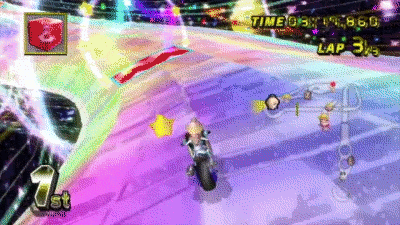
Mario Kart was (and still is) the greatest game of all time, and there is a surprising amount of physics involved – not the part about falling off the edge of rainbow road and then magically reappearing back on the track though.
Mario Kart uses Newton’s laws. The use of Newton’s first law proves why in order to get moving you have to press a button to accelerate, and when you let your finger off the button, you don’t just automatically stop, you just slow down. Newton’s second law shows how if you use a cart with a greater mass, you need a greater force to get the kart moving with the same acceleration.
Mario Kart also uses elastic and inelastic collisions. An elastic collision occurs when two karts run into each other. They both don’t stick together following the collision, but they bounce away from each other. An inelastic collision occurs when two karts collide and the one with the thunder colt transfers to the other kart and now the thunder cloud is stuck to the other kart.
While Mario Kart is mostly fictional – with flying blue shells, mystery boxes, and magically coming back to life after falling off into vast darkness – there is still a lot of subtle physics involved.
- 30
-

- 31
entries - 24
comments - 5402
views
Recent Entries
The Space Race between both the USSR and the United States is by far one of my favorite eras of history to study. They say competition is the perfect motivation, and I truly believe, from a technological standpoint, this is era is a prime example of that motto in its purest form. Some of the biggest strides in human history were made in a time where computers were still the size of rooms all due to fear, curiosity, and drive. Public Service Broadcasting’s album, “The Race For Space”, tries to capture all of these emotions, during a handful of critical points, along this journey in order to show how important this period was for Humanity as a whole. (I will cover the tracks in event order not track order)
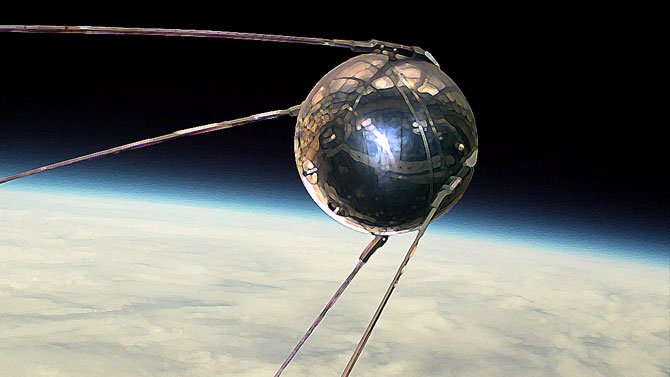
Track 2: Sputnik
The year is 1957, and, as tensions of the Cold War are ever increasing with no end in sight, humanity has its eyes on the one place neither power has even traveled: space. The Soviets, ever fearful of the United States launching into orbit, rushed through their plans to launch a 3,000 pound satellite equipped with various scientific instruments. They ended up downsizing dramatically to a 184 pound payload with a 58 centimeter diameter without any instruments. On October 4th of that year it was launched on a R-7 rocket with four stages. It nearly suffered a catastrophic launch failure, but the a combination of engine thrust and wing movement saved it last second. Well what did it do? It beeped. And that beep was the beep heard all around the world. Well at least for 22 days… its batteries actually exceeded the expectation of 14 days. For the first time in all of human history something was able to orbit the earth. It wasn’t the first man-made object in space, but it was the first which was in continual free fall around the earth. So, yes, the Soviets to prove themselves put a beeping piece of metal into orbit because that is all they needed to do to stir so much amazement and fear. The device whose name directly translates to “travelling companion”, would be the spark which set the both countries ablaze and straight into the most heated technological race in all of human history.

Track 3: Gagarin
It is now April 12th, 1961. Multiple years have passed since Sputnik, but no shortage of tests and animals had been launched into space, including the famous cosmonaut dog Laika on Sputnik 2. Now it was time to push the barrier forward onto man's reach into space. Enter Yuri Alexeyevich Gagarin. A 27 year old Senior Lieutenant Gagarin was chosen out of over 200 Russian Air Force fighter pilots by peers and project heads due to his exceptionally quick thinking and attention to detail. At 9:07 A.M. Vostok 1 took off carrying Gagarin on board. Due to the feared consequences of free fall, the Russian mission control was totally in control of the craft the entire time. Yuri was the first human ever in space, a true high water mark achieved by humanity. His trip lasted one obit, a total of 108 minutes. While the United States press showed fear of losing the space race, he was seen in many places as a hero for humanity, going on a global world tour to be paraded around countries including England, Canada, and, of course, across the USSR. This stance of him being a pioneer, regardless of national affiliation, is what PBSB was aiming for in their upbeat track. Looking back now it is easy to say he was a true pioneer for all of humanity and his efforts will forever go down in history as that of a hero.

Track 1: “The Race for Space”
The date is now September 12th 1962. President Kennedy is making a speech to 40,000 people in Rice Stadium. At this point, the United States is far behind in the space race launching the first American, John Glenn, nearly a year after Gagarin. Kennedy knew he needed to rouse the American spirit, and, in effect, his speech became a defining speech in American history. A link to the full speech can be found here: https://er.jsc.nasa.gov/seh/ricetalk.html.
Perhaps one of the most ambitious technological proposals made by a president, Kennedy promised that by the end of the decade America would put a man on the moon. Keep in mind no spacewalks had been taken, lunar modules had been made, no docking sequences had even been practiced, and here was the nation’s leader saying we could make it in 8 years or less. The National Defense Education Act had been passed due to Sputnik and had been in effect since October 4th 1957. Now its efforts of acting as a booster for the mathematics and science related fields was beginning to see results. Young engineers and scientists began coming out of Universities in order to rapidly increase the nation’s technological investments to bound ahead. This key moment not only left the nation space crazed, but made getting to space a budgeted objective at the front of the nation's interest. This vow and critical commitment is what would pave the way for the American Space program to come, as now Americans all over had their eyes on the skies.
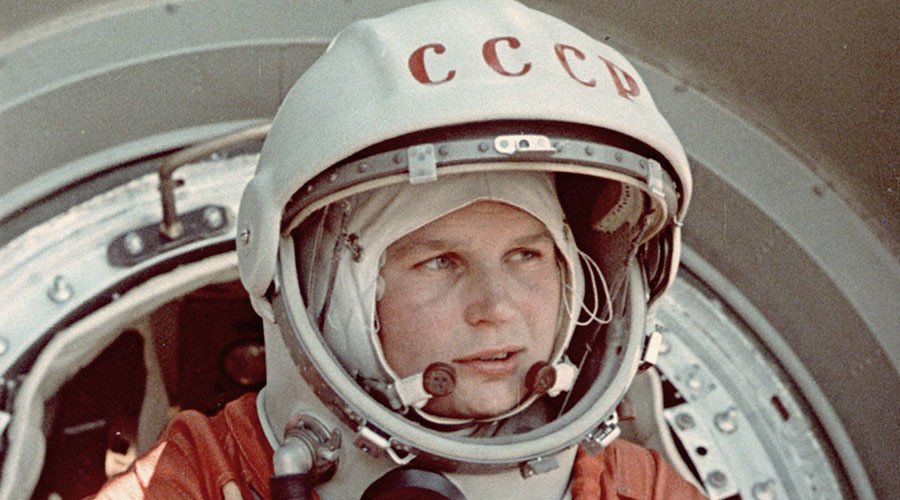
Track 7: “Valentina”
Fast forward to June 16th, 1963, Vostok 6 is launched. It is the last in the man orbital missions launched by the USSR starting with Gagarin. Well what made this so different? This time the passenger was Valentina Tereshkova. Yes, the first woman in space. Her mission lasted 3 days and she kept two way radio communications with Voltok 5 which was orbiting with her. In this time she made 48 orbits, which was quite a large feat at the time. Her personal background was that of an avid skydiver and textile factory worker making her the first civilian in space as well. The space suit she wore was the MK-2 which was very similar to the MK-1 that Gagarin wore. These suits were only meant to be pressurized in an emergency, such as if the cabin was punctured. It would take a better space suit in order to do an EVA which is the coming up milestone. Up until this point, humans have remained within their pressurized cabin in order to take a safe trip, but now we move onward and upward by finally getting out of the restrictive hull.

Track 5: “E.V.A”
On the 18th of March 1965, the Voskhod 2 mission was launched. Two cosmonauts were abroad: Pavel I. Belyayev and Alexey A. Leonov. Belyayev was the primary pilot while Leonov was the secondary, but he had a far more important mission. He was to perform the first E.V.A trialing the first space suit with a life support system in the backpack. The flight lasted 26 hours and made 16 orbits. During this time the first spacewalk lasted approximately 20 minutes with Leonov claiming the experience gave him a sense of complete euphoria and tension at the same time. The mission, being reported as a major success, acted as a dramatic blow to the United States government. At the same time, many catastrophic failures occurred while in space, but were never reported on the ground. A few moments after Leonov stepped out of the shuttle he realized his suit had inflated to the point he could not get back in. He needed to decompress, and as he let out oxygen he began feeling the initial symptoms of decompression sickness. He began pulling rapidly on the cord thrusting himself in with a moment to spare, but at his current temp he was at risk of heat stroke. His perspiration blocked his view so he had to maneuver around the airlock blind. He eventually did it and made it back in to the safety of the shuttle. This was only the start of the problems though. Due to this maneuver the oxygen content of the shuttle soared, meaning any single spark would have it blow up as quick as a flash. They managed to lower the oxygen concentration back to a safe levels. The ultimate test occured when they had to manually re-enter the atmosphere due to engine problems. They were exposed to high G forces along with high temperatures only to land off course in Siberia. They were eventually recovered and hailed as heroes. This was yet another large step to making it to the moon with the United States still lagging behind. And they were soon to have one of their largest hardships to date.
Track 4: “Fire in the Cockpit”
On the 27th of January 1967, an event which would live in national infamy occurred. The Apollo 1 space crew, comprised of Virgil Grissom, Edward White, and Roger Chaffee, all entered their command module to undergo a simulation for their up and coming launch. The first problem arose when Grissom complained of a “sour smell” in the spacesuit loop, but decided to continue the test. This was followed by high oxygen flows triggering on and off the alarm. This wasn't resolved as the communications were experiencing problems resulting in the line being only between pilot Grissom and mission control. At 6:31, oxygen levels quickly rose as Chaffee casually says he smells fire, but within two seconds, White proclaims, “Fire in the cockpit.” Escape procedure was supposed to take ninety seconds, but ultimately that time frame was too long. In the highly oxygenated environment, the fire spread too quickly, followed by the command module rupturing forcing black smoke across the landing pad. An eventual investigation found that the fire was started by a faulty bundle of wires located behind their heads. It took firemen three minutes to quell the fire and to open the doors, but it was too late all three perished. It was a day of national remembrance and an overall low in the American Space program up until that point. Their sacrifices were distinguished with the highest regard as the nation mourned and tremendous loss.
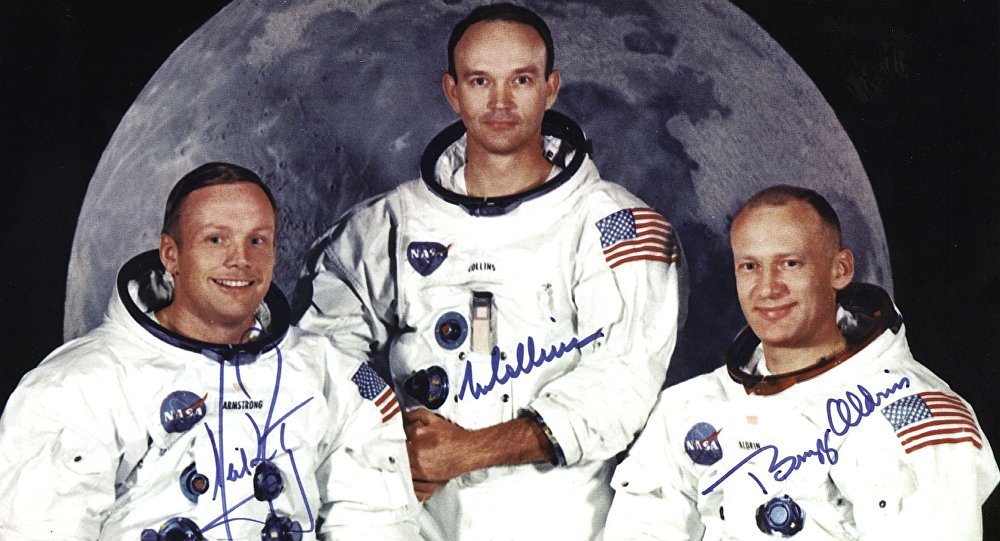
Track 8: “Go!”
Apollo 11 is by far the most known aspect of the space race. It is the moment where scholars say the United States sealed their place as the winners of the space race. It inspired kids for years to come to become astronauts. The Apollo 11 mission’s ultimate goal was to land the first man on the moon fulfilling Kennedy's earlier promise and legacy. Apollo 11 launched on July 16th, 1969 with astronauts Neil Armstrong, Michael Collins, and Edwin “Buzz” Aldrin. It took 75 hours to reach lunar orbit. This is where the focus of the song is. It includes a systems check as the lander makes it's landing maneuver and lands on the surface. The utter tension at mission control was palpable. This was the most critical part of the mission, and when they landed, from the utter joy heard over the radio, the public knew they had finally done it. Tee descent began at 102:33 with the ultimate touchdown resulting at 102:45. After a period of set up and a postponed rest period, Armstrong made his exit onto the surface at 109:24:19 to utter those famous words. Aldrin soon followed behind with the whole thing being broadcasted to the American Public. This moment, the moment where America gathered around their television screens to watch them be the farthest away from anyone else that any human has ever been, was the height of the space race. They made their return launch starting at 124:22 and plunged back into the Pacific Ocean on July 24th. These pioneers set the standard of human exploration in the space age and acted as role models for new explorers for years to come.
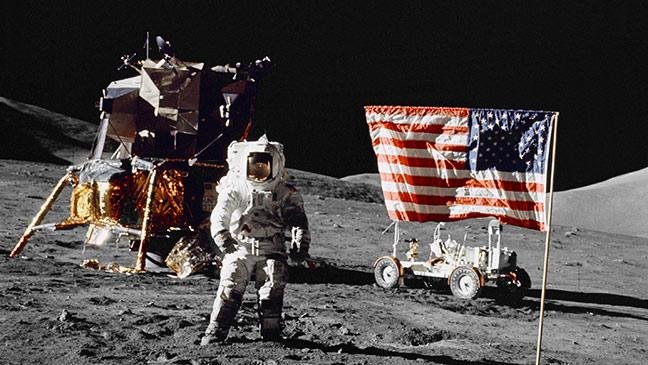
Track 9: “Tomorrow”
The last track of the album is of course the most inspirational. It focuses around Apollo 17, which was the last manned mission to the moon. it was launched on December 7th, 1972 with crew members Eugene Cernan, Ronald Evans, and Harrison Schmitt. It's main objectives were to put a Rover on the moon, conduct testing, and take samples such as moon rocks and photographs. In total over 16 hours of EVA were conducted, 30.5 kilometers we're traversed by the rover, and 243 pounds of samples were collected. The mission was a success but extremely bitter sweet being the last mission in the Apollo chapter. It ultimately completed the era of the Space Race. It has much more sentimental value in this aspect, as the track takes the time to reflect on the previous decade and a half of progress and how far the human race has come.
Ultimately the space race was a period of history where nations gathered behind the scientific progress they conducted. Yes, there was always the fear of mutual destruction, but the sense of shared awe at what humanity achieved far overshadows that factor when looking back at history. There are not many periods of history where technology progressed at such breakneck speeds, and may not be for a long time. There is plenty more to read about the period, and I encourage you to do so if this interested you at all.
As always it had been a pleasure! This is ThePeculiarParticle, signing out.
Informal Bibliography
Esa. “The Flight of Vostok 1.” European Space Agency, European Space Agency, www.esa.int/About_Us/Welcome_to_ESA/ESA_history/50_years_of_humans_in_space/The_flight_of_Vostok_1.
“The First Spacewalk.” BBC, BBC, 2014, www.bbc.co.uk/news/special/2014/newsspec_9035/index.html.
Larimer, Sarah. “'We Have a Fire in the Cockpit!' The Apollo 1 Disaster 50 Years Later.” The Washington Post, WP Company, 26 Jan. 2017, www.washingtonpost.com/news/speaking-of-science/wp/2017/01/26/50-years-ago-three-astronauts-died-in-the-apollo-1-fire/?noredirect=on&utm_term=.7d4feb08cec3.
“NASA.” NASA, NASA, www.nasa.gov/.
“National Air and Space Museum.” The Wright Brothers | The Wright Company, airandspace.si.edu/.
RFE/RL. “Kennedy's Famous 'Moon' Speech Still Stirs.” RadioFreeEurope/RadioLiberty, RadioFreeEurope/RadioLiberty, 13 Sept. 2012, www.rferl.org/a/kennedy-moon-speech-rice-university-50th-anniversary/24706222.html.
“Space.com.” Space.com, Space.com, www.space.com/.
“Sputnik Spurs Passage of the National Defense Education Act.” U.S. Senate: Select Committee on Presidential Campaign Activities, 9 Mar. 2018, www.senate.gov/artandhistory/history/minute/Sputnik_Spurs_Passage_of_National_Defense_Education_Act.htm.
(Disclaimer the websites were used many times for different articles)
- 31
-

- 27
entries - 15
comments - 4684
views
Recent Entries
Latest Entry
What Does the Gold Foil Experiment Mean?
The gold foil experiment is the famous experiment conducted by Ernest Rutherford that we all learned about in chemistry class. This experiment proved that atoms are made up of mostly empty space. In fact 99.9999% of an atom was proven in this experiment to be empty space. Lets say we could eliminate all that empty space by condensing the parts of an atom together. How much weight could we fit in a small space such as a single teaspoon? Over a billion tons!
This idea is common when studying astronomy. At the end of a stars life, it collapses and explodes in a supernova explosion. The remaining mass that the supernova leaves over is so dense that the star begins to collapse in on itself. As a result of this, electrons fall into the nucleus and smash into protons becoming neutrons; hence the name neutron star.
This animation shows a star going through a supernova explosion. The accuracy of this animation is highly questionable but it certainly looks cool.

- Read more...
-
- 0 comments
- 27
-

- 0
entries - 0
comments - 608
views
No blog entries yet
- 0
-
 Latest Entry
Latest Entry
About me
I am a student at IHS. As I dive into my senior year I hope to discover new opportunities and interests. I play baseball in the spring and summer. During my free time I like to watch sports or read; however, one of my greatest interests has always been science. I am taking AP physics C this year to further my understanding of the universe. I always knew I liked science, but taking AP physics 1 last year helped me find out that I have a specific passion for physics. In the future I would like to continue my interest in physics by taking it in college and having a career in the engineering field. This year in physics I would like to become more skillful in becoming self taught. This will give me opportunities to become a more innovative person. This year I am most excited about the independence that comes with being a senior. I am anxious for my college research process to come to an end so I can finally apply to the schools and decide where I want to go.
-

- 30
entries - 30
comments - 4095
views
Recent Entries
Latest Entry
A Review and Conclusion
This year, I really pushed myself with new challenges that were difficult, but also very rewarding. I took on the challenge of a flipped classroom and learned a new way to be a student that will help prepare me for college. While at times it was a struggle to keep up, this course kept helped me prepare for college by forcing me to work on my time management skills. I think that I have a lot more of improvement to do on this, but I have come a long way from the beginning of the year. I think before I go to college, it might be a good idea to review Dr. Chew's videos and brush up on some of the proper learning techniques that he taught. Another new thing that I took on this year was completing blog posts for this class. This activity taught me a lot of new things about how what we are learning in physics applies to the real world and I really appreciate all that I have learned. Going forward, I will have to apply the math and physics of the classroom to the real world, and doing the blog posts gave me a little bit of insight into the connections between the two. Although it may have been a challenge at times to complete the necessary blog post on time, I enjoyed learning new things about the world around me.
- Read more...
-
- 0 comments
- 30
-

- 30
entries - 17
comments - 3617
views
Recent Entries
Latest Entry
This Year in Review
This year has been a wild ride, and the AP weeks are approaching fast. With the third quarter ending, and soon most AP classes to have not much work to do, I need to take the time to look back on this year. Physics was a struggle, but that made it a lot of fun. I have learned a lot, and have learned new was of how to learn based on the style and difficulty of a class. It was a great choice to make and it has really helped me to learn what is in store for the future at college. Calc didn't catch up to physics until it was toward the end of the second quarter, which made the math fun, but that was a good learning opportunity as well. As the year slowly comes to an end I am happy but sad as this year has been rough, but I couldn't have asked for a better year to end on.
- Read more...
-
- 0 comments
- 30
-

- 28
entries - 33
comments - 4854
views
Recent Entries
Latest Entry
Aurora Borealis
Many of us know the Aurora Borealis as the 'Northern Lights'. This natural phenomenon is, of course, thanks to the physics of our Earth and its atmosphere!
 (Photo credit: NASA)
(Photo credit: NASA)
The Aurora Borealis is an extremely beautiful event that occurs most often close to the magnetic poles of Earth. It occurs due to charged particles coming from the Sun of which collide with other molecules found in the Earth's atmosphere. Solar winds from the Sun carry these charged particles and when the wind passes by Earth, particles may be trapped in the atmosphere from the Earth's magnetic fields! The charged particles ionize molecules in the atmosphere, which give off light. This creates the Aurora Borealis!
I had previously thought that the Northern Lights were from light reflecting somehow, but it awesome to see that it is caused by magnetism, which fits into our past few units very nicely.
- Read more...
-
- 0 comments
- 28
-

- 3
entries - 9
comments - 2049
views
Recent Entries
Latest Entry
Dying
I was scrolling through Instagram and found this hilarious meme of someone's Tinder profile. It reminded me of earlier this week when Mr. Fullerton said that if a girl had the quadratic formula tattooed on her forehead, she wouldn't get a date. I guess nerds don't need love. Anyways, I entitled this blog "Dying" because, first of all, that meme made me die of laughter and, second of all, the first AP Physics C test killed me. With reflection I realized that this year is going to be a lot harder than I even first anticipated. I am not the smartest student on Earth, but I have an ambition and unwavering optimism in everything I do. Seeing that I "failed" a test really killed my spirits, and I am hoping that this class will not be the death of me. But deep down I know I can do it. AND YOU CAN TOO. We've just got to keep up with the work and keep trying. I learned that if I get slapped in the face by physics problems, I need to slap them back twice as hard.
- 3
-

- 29
entries - 28
comments - 4081
views
Recent Entries
Latest Entry
Ferro Fluid
This is an example of how magnets can be used for levitation, or hovering if you will. All this is, is simply the force of the magnet overcoming the force of gravity of the magnet and the liquid. In this way, a "hover board" would be nothing other than a force keeping something off the ground, which is just what a normal force is when you have an object sitting on the floor. However, using magnets for levitation is cool because you cannot see the force acting on the object, and the force can also be transferred through things, putting your hand between something being levitated by a magnet would not stop the magnetic repulsion, which is pretty cool to think about and even cooler to see.
- Read more...
-
- 0 comments
- 29
-
Recently Browsing 0 members
- No registered users viewing this page.

